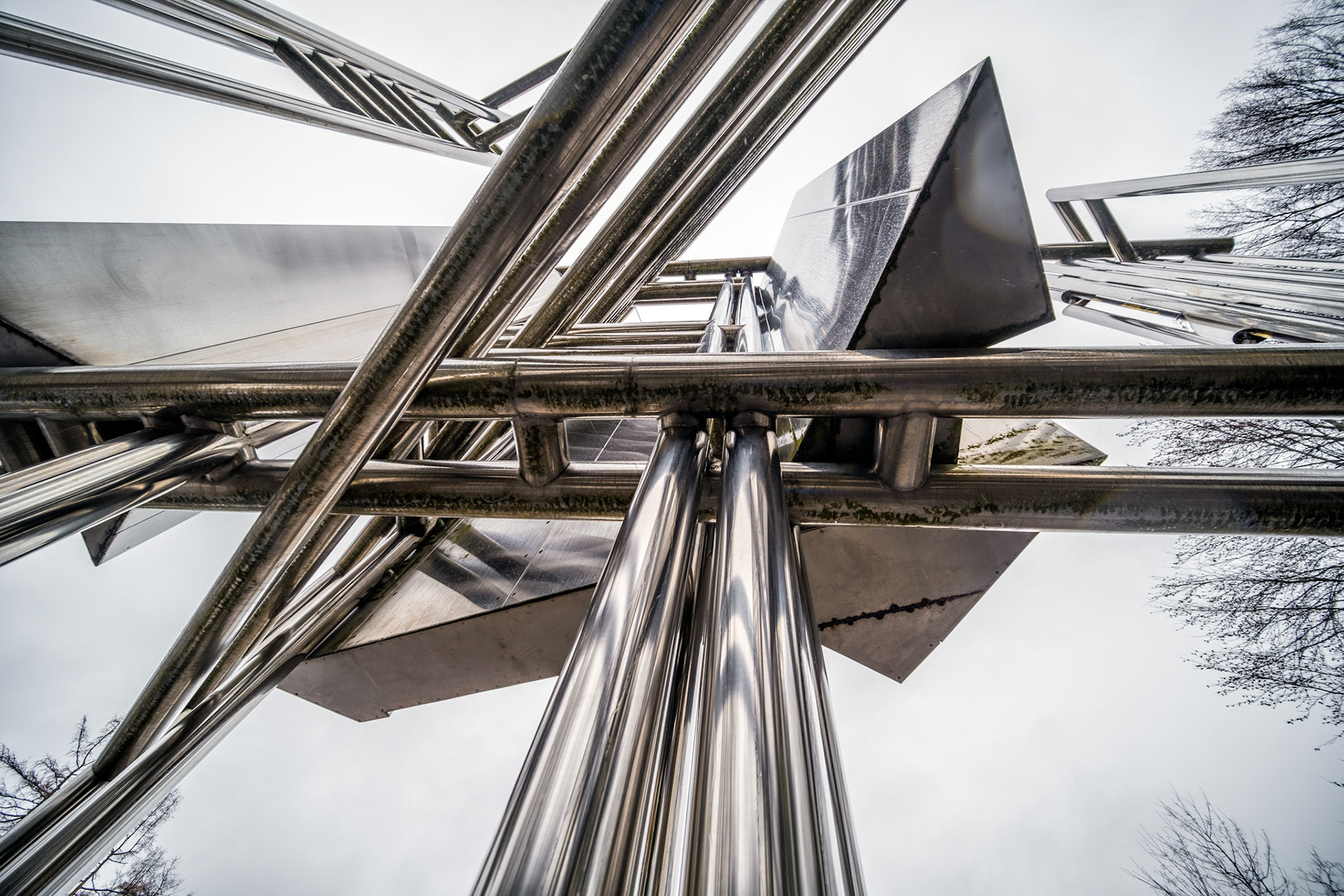The first Watchmaking Museum in La Chaux-de-Fonds was inaugurated on March 24, 1902, originally housed within the building of the local Watchmaking School. Over the years, its collection has grown significantly, evolving into what is now the Musée International d'Horlogerie (MIH). Today, the MIH boasts the world's most extensive and significant collection entirely dedicated to the art and science of timekeeping
In 1968 an architectural competition was initiated for a new museum building to be located next to the municipal park. The MIH was built between 1972 and 1974 to plans by Pierre Zoelly and Georges-Jacques Haefeli. In order to preserve the municipal park environment, the museum occupies an underground volume of 20000 square meters, dug into the side of the park. Selected among 76 project, the MIH was awarded the concrete architecture price in 1977.
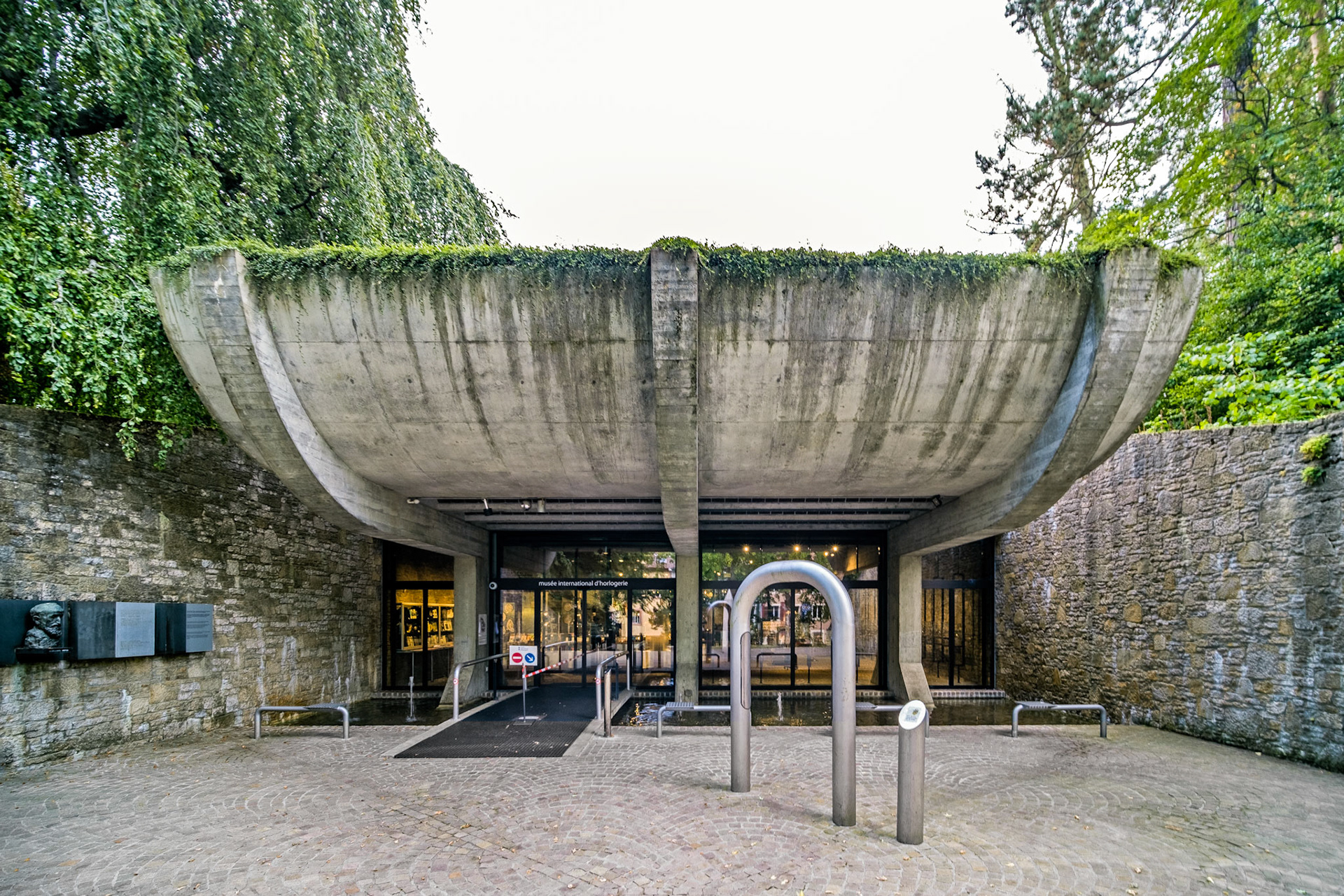
Entrance of the Musée international d’horlogerie, La Chaux-de-Fonds
Natural light flows into the museum through large window panes. They are integrated into curved walls that rise from the municipal park.
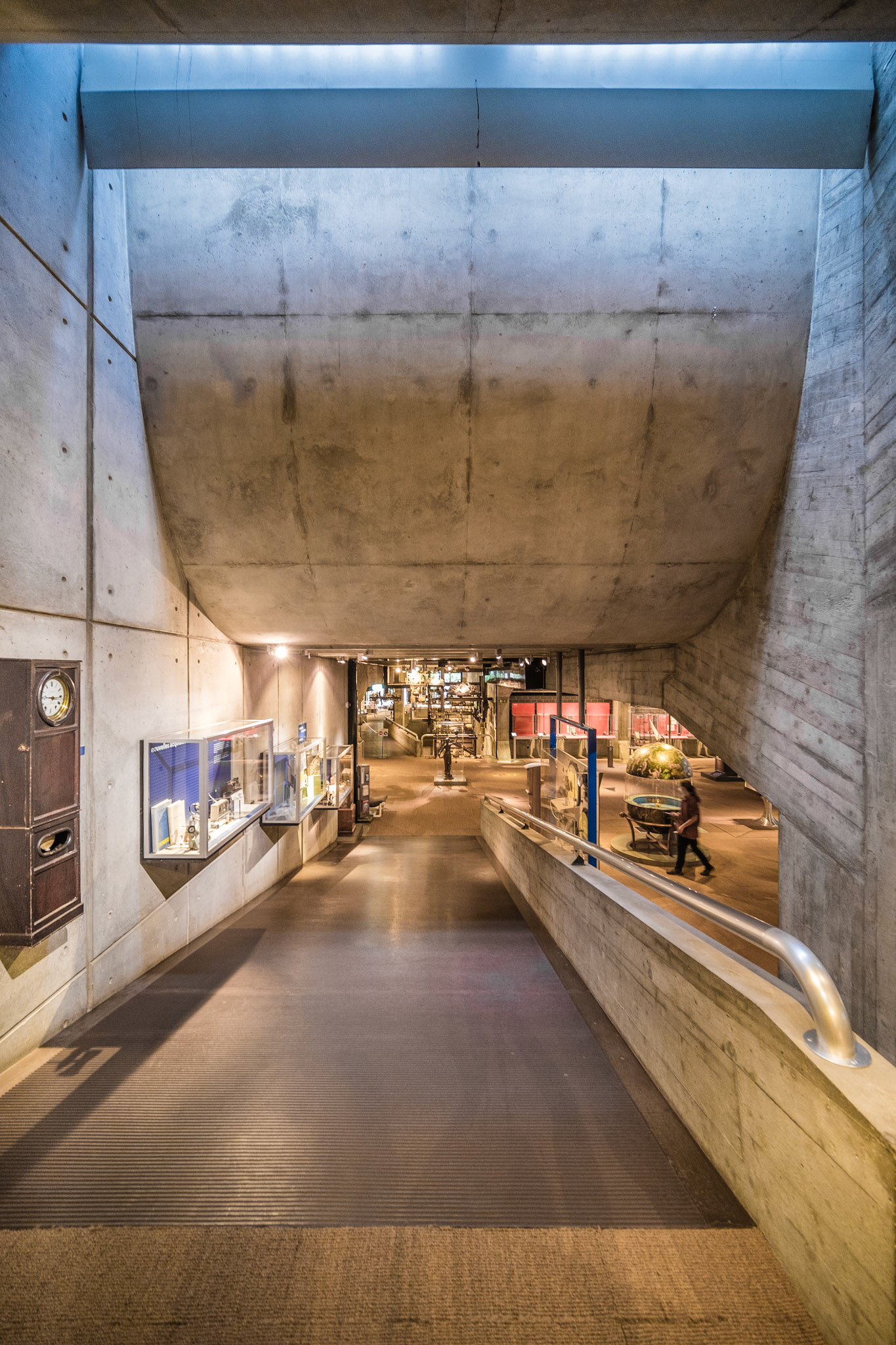
Musée international d’horlogerie, La Chaux-de-Fonds
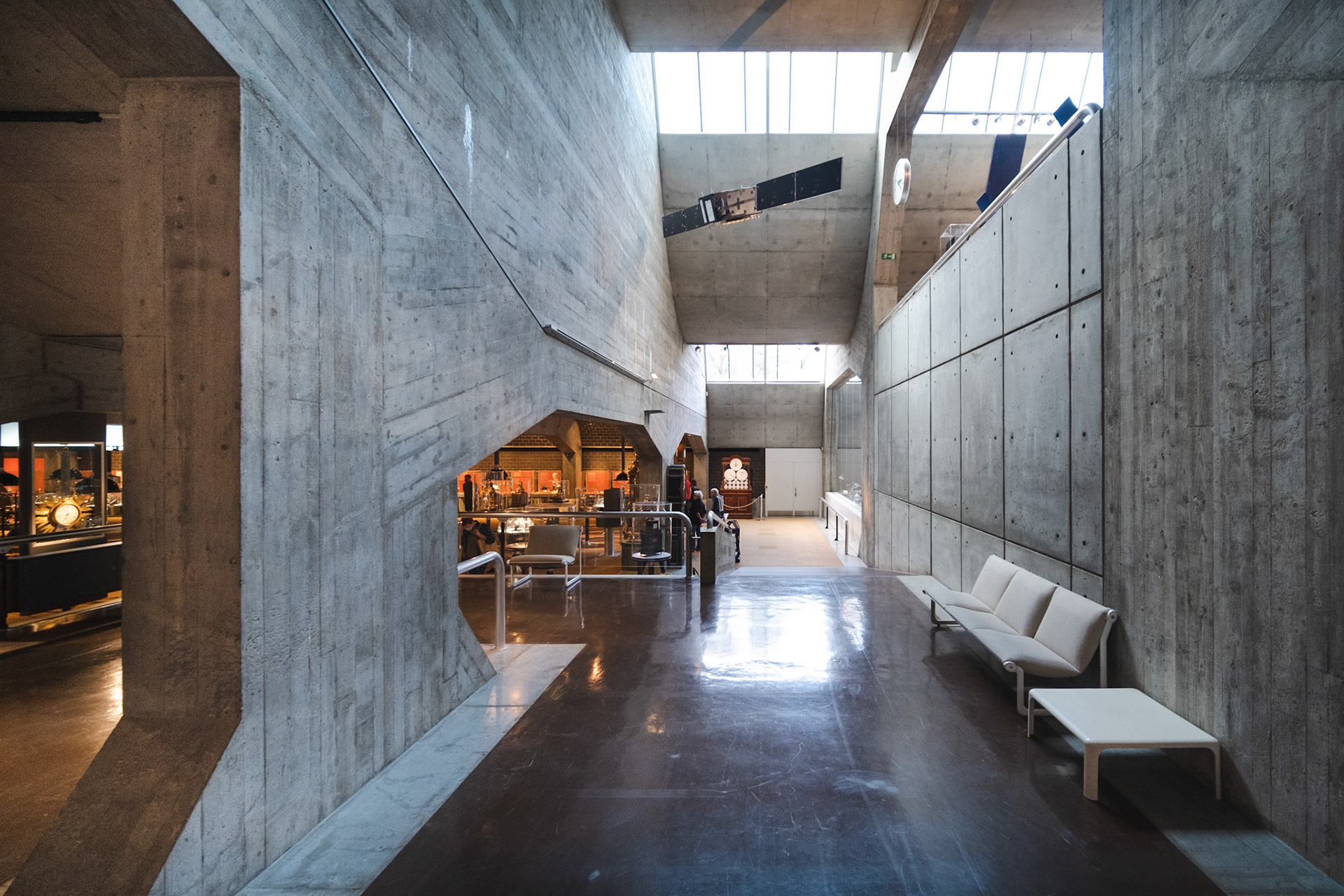
Musée international d’horlogerie, La Chaux-de-Fonds
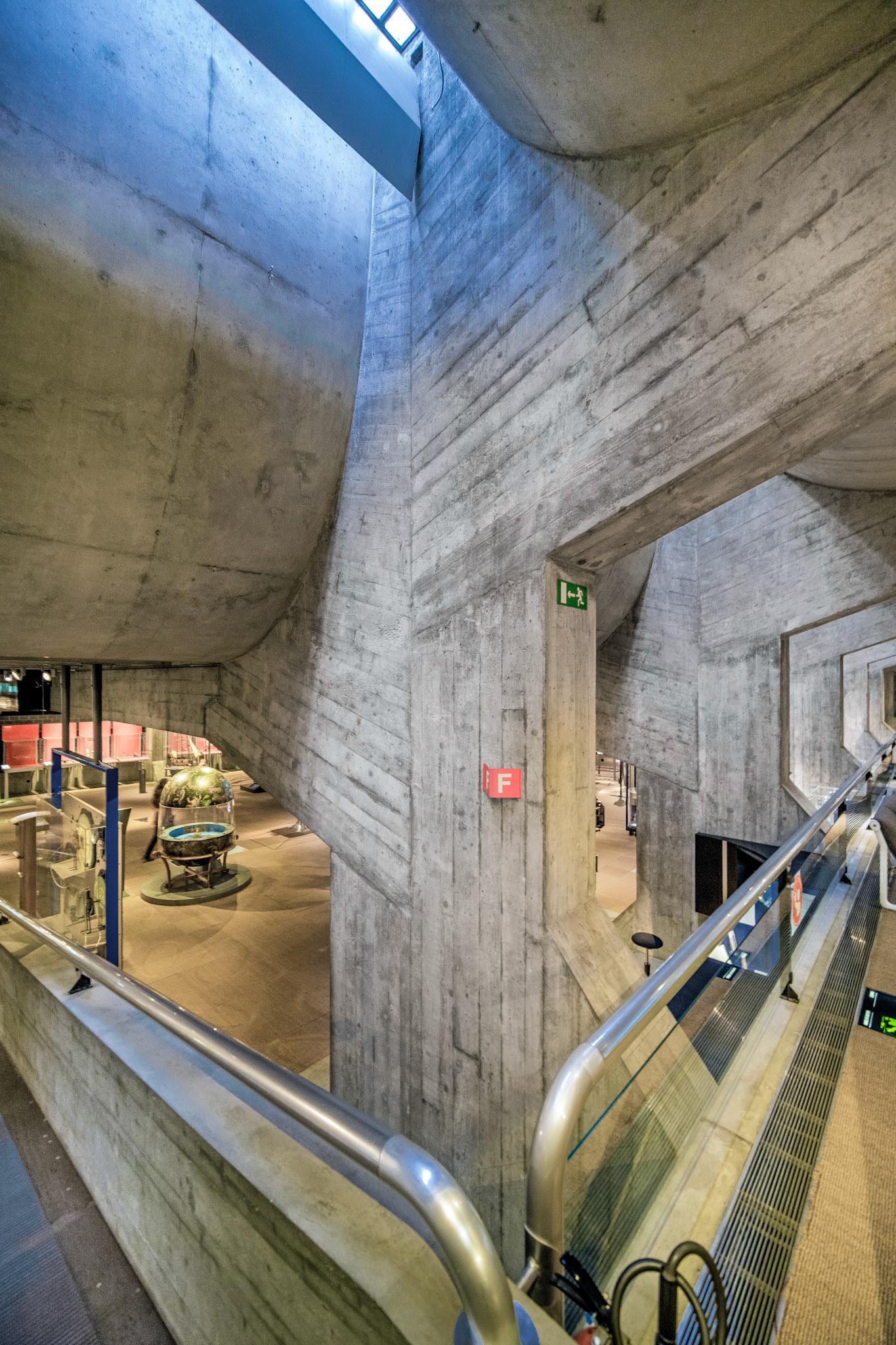
Musée international d’horlogerie, La Chaux-de-Fonds
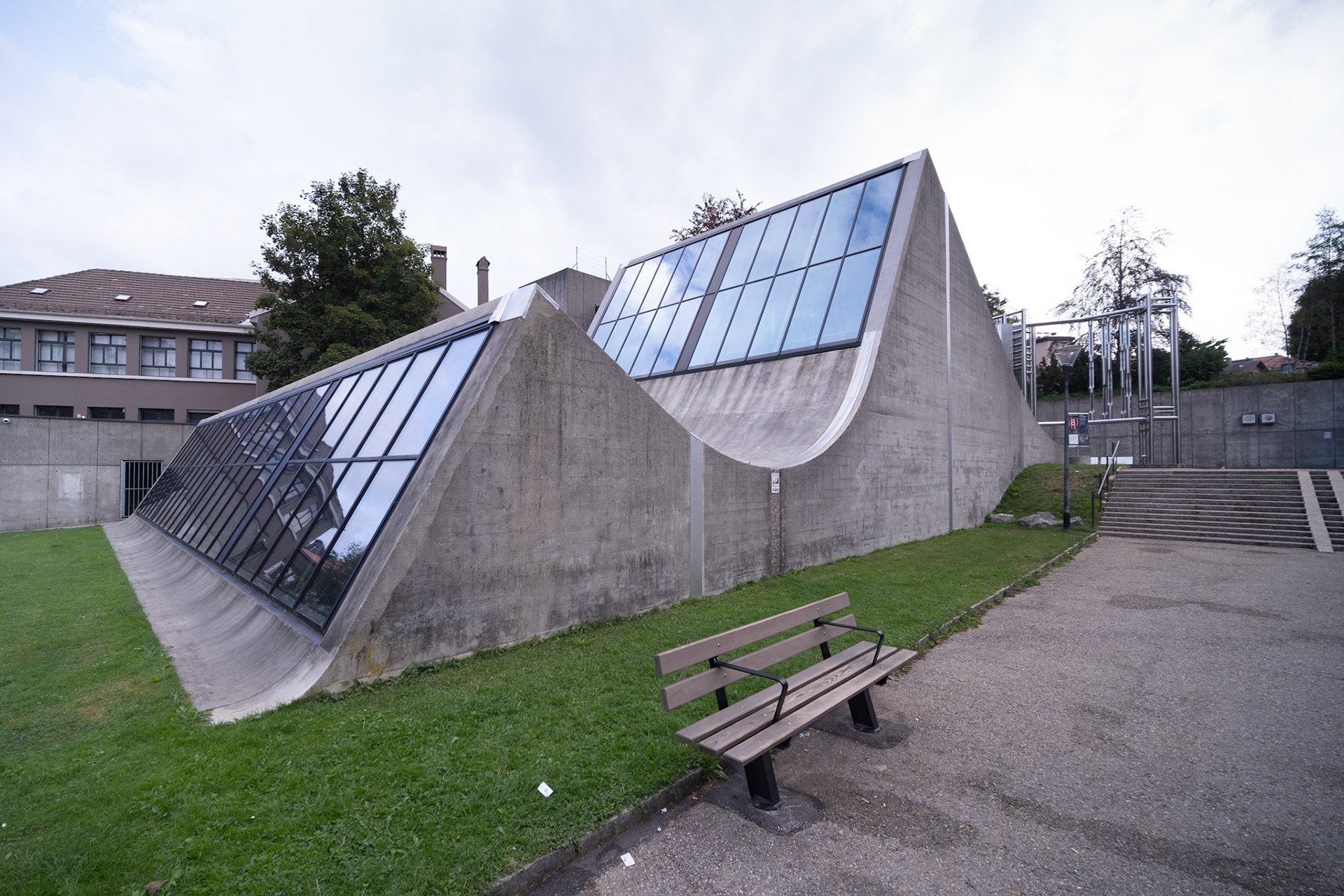
Museum windows inside the municipal park
The three underground levels also delimit the different sections of the museum: temporary exhibitions and assemblies, works from the ancient era, and manufacturing and contemporary watches.
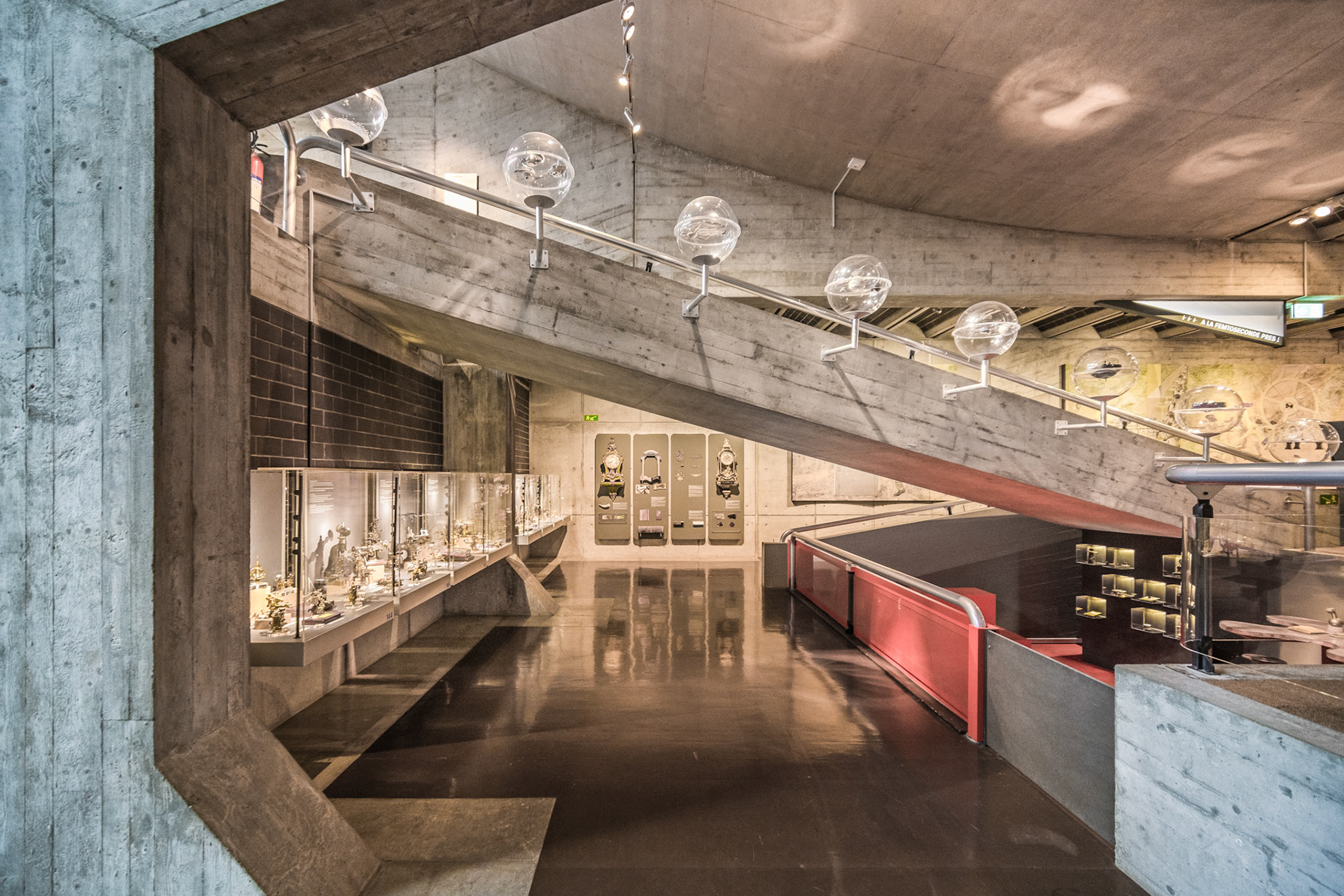
Musée international d’horlogerie, La Chaux-de-Fonds
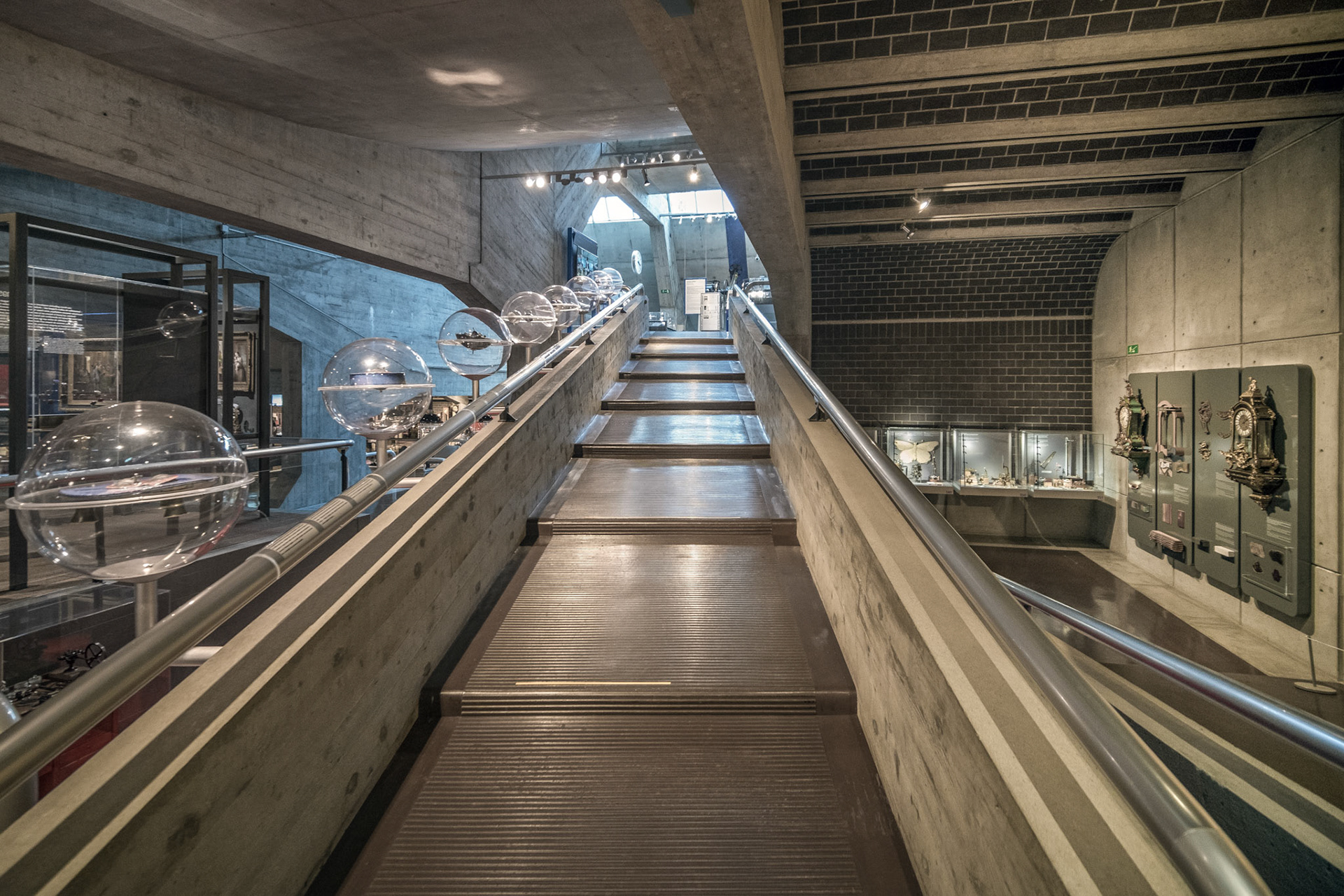
Musée international d’horlogerie, La Chaux-de-Fonds
The carillon in the museum park is the work of sculptor Onelio Vignando. Executed in stainless steel, the sculpture has a weight of 15 tons. Being both acoustic and mobile, it animates the park every fifteen minutes with twenty-four tubular bells, twelve moving blades, the broadcast of a recording and the play of colored projectors.
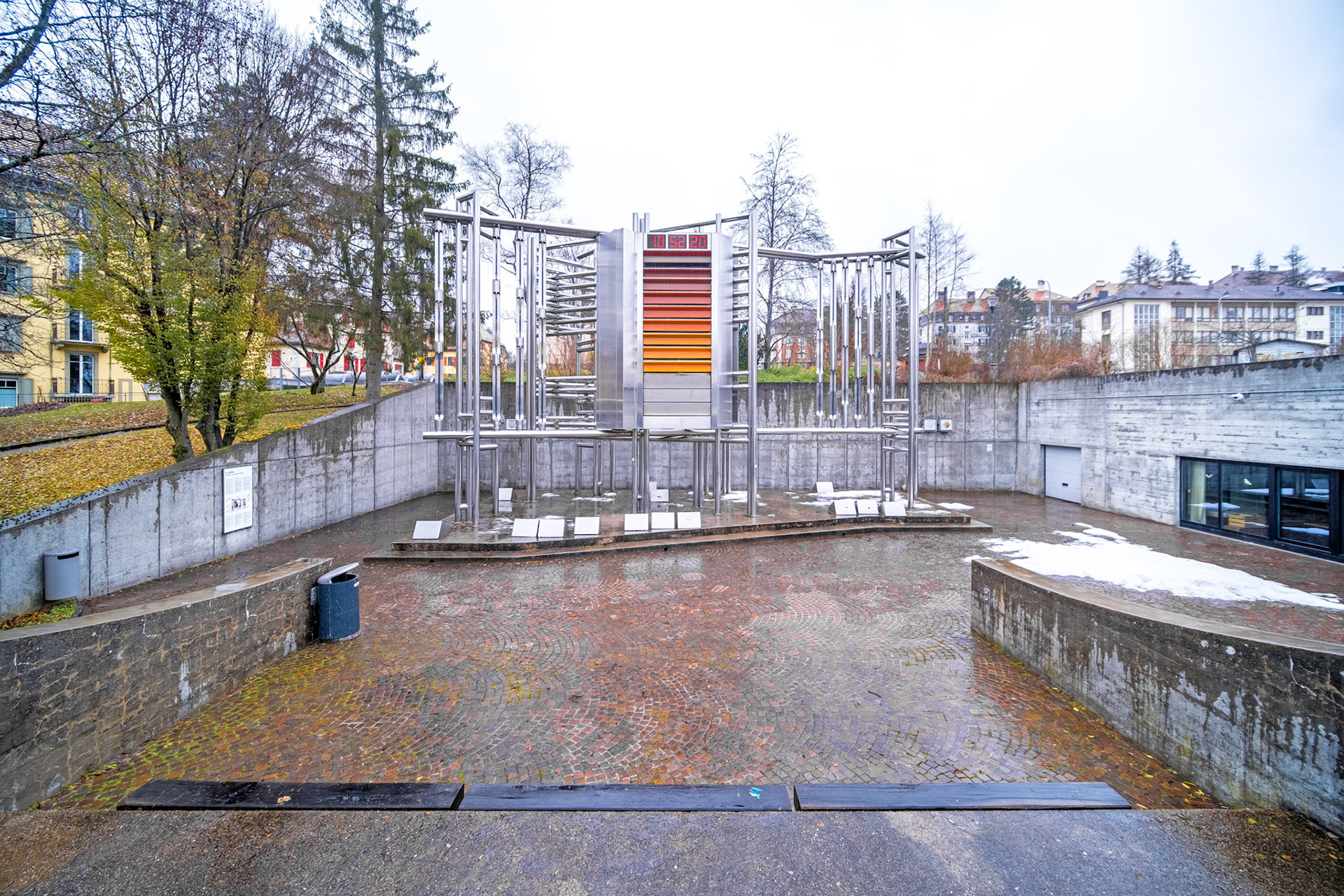
carillon of the Musée international d’horlogerie, La Chaux-de-Fonds
